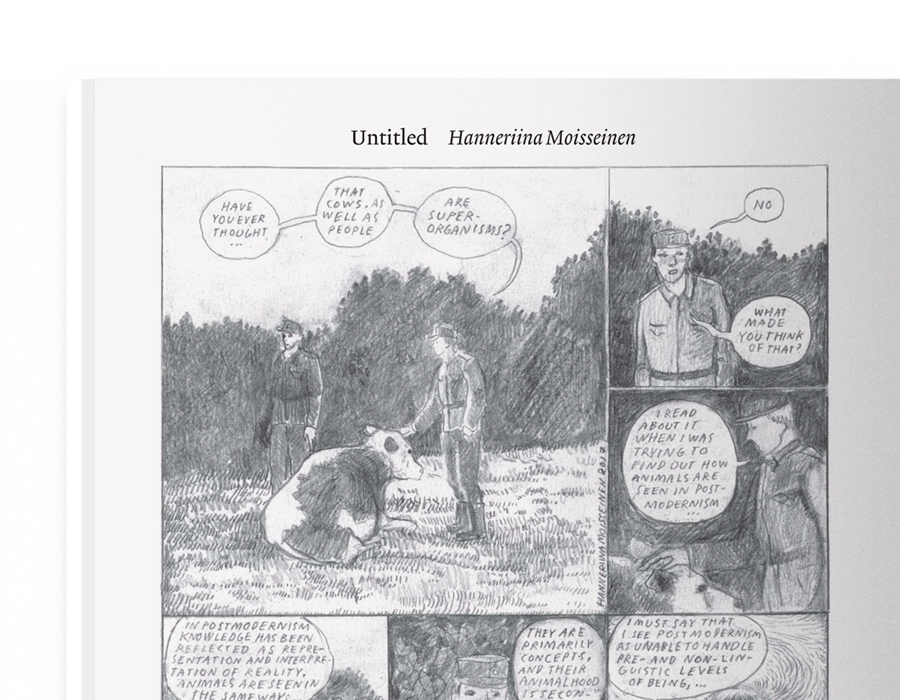Divided between Finland and Russia, the subarctic Scandinavian region of Karelia is known as ‘The Songsingers’ Land’, a reference to the tradition of singing runes. A less well known tradition, all but forgotten today, concerns the sharing of ‘shameless stories’ – embarrassing tales traded among indigenous Karelians. It was in the student city of Joensuu, on the Finnish side of the border, that Hanneriina Moisseinen was born in 1978. Trained in the visual arts, she became intent on recovering her homeland’s traditions and history, and incorporated making comics as part of her varied practice.
For her first book, Syn Synty (2005), she translated some amusing, touching ‘shameless stories’ recorded by the writer Markku Nieminen from elderly people in the region known as White Sea Karelia into pencil-drawn short strips. In a sequel, Setit ja partituurit (2010). Moisseinen adapted some of the embarrassments of her contemporaries, switching between her drawings and reproductions of her exquisite needlework and embroidery. In a third work, Isä (2013), she used this mixed media approach to investigate her own tale, featuring a father who inexplicably vanished when she was ten. By preserving her childhood recollections and those of his friends and colleagues, she pieces together as best she can an inevitably partial paternal portrait.
Last year Moisseinen won Finland’s State Prize for Comic Art with Kannas (The Isthmus). Set in the summer of 1944, it recounts Finland’s loss to the Soviet Union of the southern Karelian Isthmus, along with Finland’s second largest city, following two wars in five years. In the aftermath, the entire population, around 400,000 people, was forced to relocate. Kannas is told mainly from the atypical viewpoints of a shellshocked, almost spectral Finnish deserter and a milkmaid determined to stay with her cow. For references, Moisseinen relied on archival photographs and 50 hours of recordings of evacuees’ experiences. “I also used these photos for building the script and reprinted several in the book as separate full-page panels between the drawn comics,” the artists says. “I wanted the photos to remind readers that although the story can be read as fiction, the bigger story behind this book actually happened. The people in the photographs are real.”
In the softest of pencil strokes, Moisseinen’s drawings finely balance surreal humour and poignancy in their depiction of war’s dehumanising conditions, from the deserter who uses a dead soldier’s helmet to milk the cow (the milk pours through the bullet holes) to the cow who in exchange for being milked treats the soldier’s armpit as a salt lick; meanwhile the barefoot milkmaid pries the boots off a Russian soldier’s rotting corpse, and the cow cries as her newborn calf is shot.
For the September issue of ArtReview, Moisseinen returns to soldiers and cows, here discussing ideas from the artist’s MA thesis on animal–human relationships. She is developing these ideas into large gallery-specific artworks that she calls ‘posthumanist animal comics’, to open in early 2019 at the Aboa Vetus & Ars Nova Museum in Turku, Finland.
From the September 2017 issue of ArtReview. Subscribe in print or digital to read more
